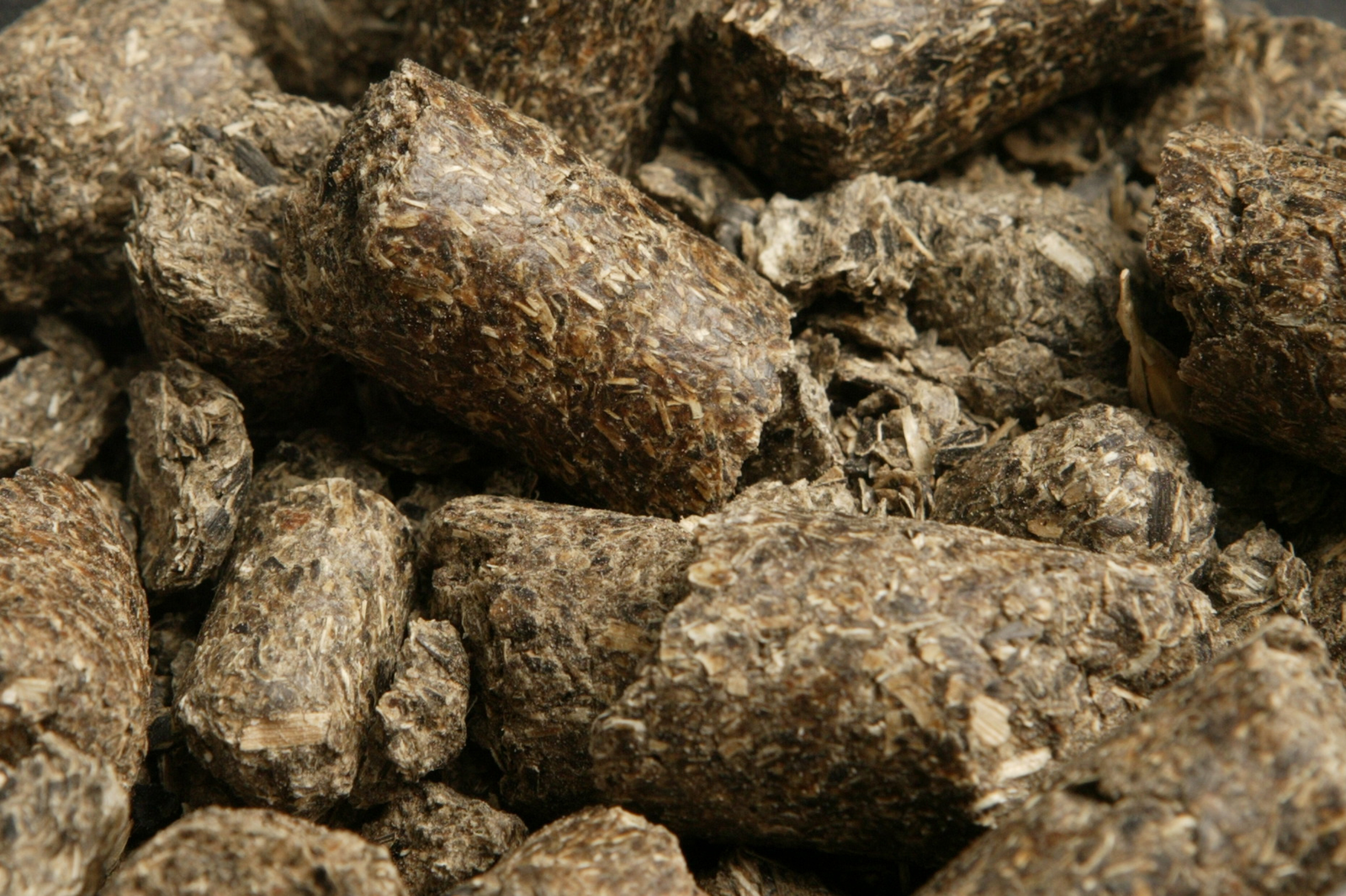Pelleting offers solutions for new challenges in meat production

A significant amount of feed fed to animals throughout the world undergoes some type of thermal processing. Swine research studies clearly indicate that pelleted feed improves animal performance.
Thermal processing traditionally been used with pelleting, expansion, and extrusion. Traditionally, heat treatment has occurred prior to pelleting, but there is new thermal processing and cooling technology that can heat treat feed to be fed as mash diets. However, most feed mills continue to use the pelleting process to reduce pathogens, increase the density of the feed, and reduce segregation of ingredients during transport and feeding. Most pellet mills are equipped with short-term conditioners. The short-term conditioner that steam conditions feed for 20 to 30 seconds is being replaced with conditioners that condition feed for longer than 60 seconds. The change to long term conditioning is being driven by government regulations and consumer demands for greater heat treatment of all feeds. These new long term conditioning systems are becoming more prevalent as a method to control pathogens in feed in Europe, as well as in North American feed mills that produce feed for broiler breeders. These systems can be used to condition the feed for 5 to 8 minutes at a set temperature, and with proper computer controls, not allow the product to exit the conditioner until it reaches the target temperature. The process can be set up to ensure that all of the feed is heat processed to a minimum temperature before entering the pellet mill. In this article we discuss the effects of feed processing on starch gelanisation, nutrient utilisation and pathogen mitigation.
Starch gelatinisation
Pelleting is known to improve swine feed efficiency from 4 to 8%, and many consider this improvement due to reduced feed wastage and increased starch gelatinisation that occurs during the conditioning process. However, true gelatinisation of starch molecules occurs when heat and moisture reach approximately 70°C and 25% moisture. Pelleting typically adds only 6% moisture and temperatures are not high enough to overcome this relatively low moisture addition. Instead, it is likely that the conditioning process swells molecules to increase starch granule exposure and potentially alters the tertiary structure of dietary proteins, but the available data suggests that moisture levels are not high enough to truly gelatinise a substantial quantity of starch. Recent data published by Lewis et al (2015) in the Journal of Animal Science confirms this theory by demonstrating that increasing pellet mill conditioner temperature slightly alters percentage starch gelatinisation, but changing conditioning time has no effect on starch gelatinisation (Figure 1). However, the greatest increase in starch gelatinisation was not from conditioning, but actually from the physical process of pressing feed through the pellet mill die. Therefore, one can conclude that pellet mill conditioning parameters have less effect than the frictional heat of the die on starch gelatinisation.
Nutrient utilisation and growth
To further understand the role of conditioning time on swine growth performance, a second experiment conducted by Lewis et al. (2015) evaluated the effects of pellet mill conditioning time on animal growth performance. A phase 3 nursery diet was manufactured as mash or pelleted at 88°C with a 30 second conditioning time. In addition, the same diet was pelleted with conditioning times of 15, 30, or 60 seconds and reground to a similar particle size as the mash diet to remove the effect of feed form. Processing did not affect ADG, but ADFI was reduced in the pelleted diet. The effects on feed efficiency are displayed in Figure 2. While feed efficiency was improved when pigs were fed a pelleted diet compared to a comparably processed one that was reground, there were no differences between the mash and reground diets with varying conditioning time.
Pelleting is often utilised in nursery pig diets, but a growing number of producers are considering applying the improvements in nutrient utilisation to finishing pigs. In a 79-d experiment, Bokelman et al. (2015) evaluated growth performance and nutrient digestibility of finishing pigs when different feed processing methods are utilised to manufacture low energy diets containing 30% DDGS and 19% wheat middlings. While the diet composition remained the same for all treatments, it was fed in various forms: mash, pelleted at 70°C with a 45 second conditioning time, pelleted at 70°C with a 90 second conditioning time, and extruded at 170°C. The authors found that thermal processing, regardless of method, improved ADG, feed efficiency, and caloric efficiency. Crude fat and crude fibre digestibility was also improved with thermal processing, but the type of thermal processing was not relevant. Interestingly, thermal processing also increased the iodine value of jowl fat, an indirect measure of carcass fat softness.
Potential for pathogen mitigation in feed manufacturing
While previous research in livestock feed manufacturing has almost exclusively evaluated improvements on nutrient utilisation or handling characteristics, thermal processing is garnering attention for its potential for pathogen mitigation. The unique time × temperature interaction of conditioning and pelleting may play a pivotal role in reducing the risk of microbial contamination of animal feeds, which is becoming more important as consumers and federal regulators begin utilising a systems approach to scrutinise food safety. Recently, Cochrane et al. (2015) demonstrated that pelleting poultry diets reduced the concentration of a Salmonella surrogate by 3 logs (Figure 3). The diets were initially inoculated with Enterococcus faecium and then pelleted with a conditioning temperature of 70°C for 45 seconds. These findings are substantial because of the dramatic reduction of the pathogen compared to the mash diet but also to point out that there was not complete mitigation. This demonstrates that, while effective at reducing the concentration of E. faecium, pelleting is not a complete kill step for this surrogate of Salmonella. Still, it appears that pelleting can be a useful tool to mitigate risk for Salmonella. In addition to reducing the microbial concentration of bacteria, the time × temperature combination of conditioning during the pelleting process may also mitigate viral contamination of feed or ingredients. Most recently, Woodworth et al. (2015) demonstrated that pelleting diets at 68.3, 79.4, or 90.6°C for 45, 90, or 180 seconds mitigated Porcine Epidemic Diarrhoea Virus to the point of non-infectivity under experimental conditions. While viral RNA still existed in the pelleted samples, it was denatured to the point to prevent an outbreak when fed to animals.
The role of pelleting in livestock nutrition is expanding
In conclusion, pelleting continues to provide advantages to animals, but its use and purpose is growing to include a better understanding of its role in nutrient utilisation and expanded use in microbial pathogen risk mitigation. As meat production continues to address sustainability and food safety concerns raised by consumers, the feed manufacturing industry is responding by providing solutions to maximise nutrient utilisation and improve animal feed safety.
Join 26,000+ subscribers
Subscribe to our newsletter to stay updated about all the need-to-know content in the feed sector, three times a week. Beheer
Beheer









 WP Admin
WP Admin  Bewerk bericht
Bewerk bericht